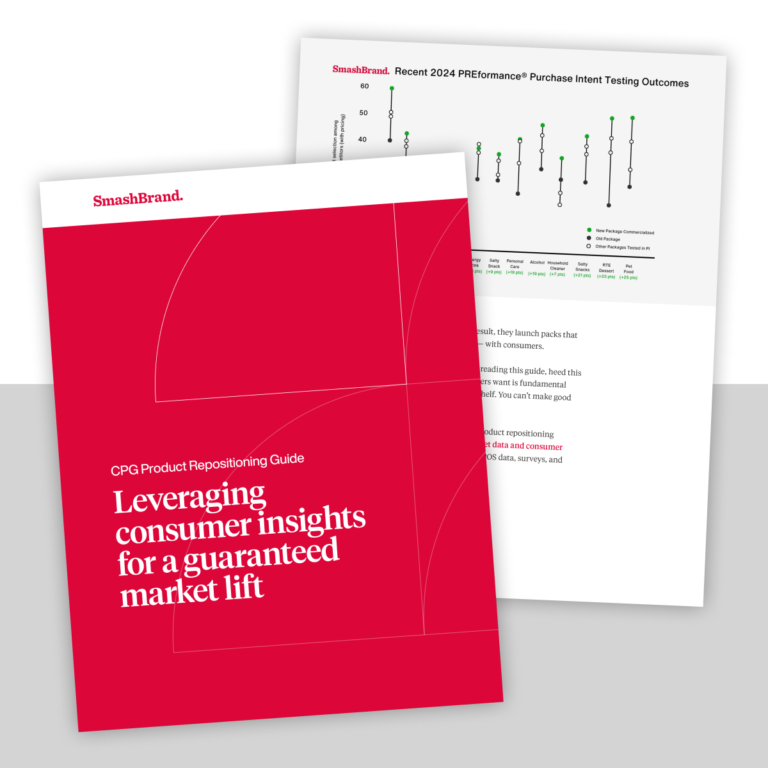You’ve created a great product, landed a national retailer, and established a strategic marketing campaign to support the retail channel. At this point, many brands sit back, hoping to watch the revenues roll in. Unfortunately, these same brands are being yanked from store shelves because of poor retail execution.
Consumer goods retail execution is one of the most critical aspects of brand management, requiring a concrete strategy, rigorous implementation, and consistent monitoring.
In this article, you will learn:
- What is retail execution?
- Who is in charge of retail execution?
- The dangers of not having a retail execution strategy.
- Priming the retail execution engine.
- Each aspect of successful retail execution.
- How to conduct a retail store audit.
- A look at a few retail execution strategies.
If you are an FMCG or CPG brand, you need to understand the ins and outs of retail execution to achieve the goal of retail shelf success.
What is Retail Execution?
Retail execution refers to getting consumer packaged goods onto retail shelves and into consumers’ hands. It ensures that products are displayed, priced, and promoted in stores to maximize sales and meet consumer demand. Effective retail execution is crucial for the success of consumer packaged goods companies in competitive retail markets.
Whose Job is Retail Execution Management?
The size and structure of an organization dictate the roles and responsibilities, but overall, we manage retail execution through our:
- Brand Managers: The brand manager reviews the reports and interacts with retail execution tools to track progress, capture insights, and further the strategy.
- Retail Managers: Larger brands that segment brand management into separate channels may have a retail manager working directly with in-store commerce. In most cases, they will also track progress and capture insights.
- Sales Reps: In-office sales representatives may be the first point of accountability, signing off on completing a retail execution.
- Field Sales Reps: A field sales rep will be the first in-person touchpoint where they can monitor retailer compliance and strategy impact.
- Merchandizers: The team in charge of merchandising is the ones who follow orders and perform the retail execution.
The Risk of Not Having a Retail Execution Strategy
CPG companies shouldn’t leave anything to chance if they hope to retain visible placement in retail chains of real significance. The CPG industry is too competitive to let important aspects of category management slide.
The greatest risk of poor execution (both in strategy and management) is easy to understand; you will lose the partnership. We see this with DTC brands hoping to shift into the retail market. Assuming their brand identity is enough to carry them through results in a downgrade. Without their website to back them up, these DTC brands come across with weak positioning, inconsistent offerings, and poor packaging design.
Setting The Stage for Retail Execution
Retail execution requires forethought and a front-loaded investment of time, capital, and resources. This isn’t something your sales rep keeps top of mind when approaching a retailer. It’s up to the brand to think through in advance.
CPG brands need to consider these two points before executing in retail.
Merchandising Data & Shelf Testing
One of the most critical steps to retail success is coming into the conversation with data to support your brand differentiation and unique selling proposition.
Most brands come in with category data, some come in with statistics about their key differentiators, but few come in with data that discusses purchase intent.
The best way to ask for premium placement is by having proof that consumers are ready to choose your product over the competition, from brand equity to packaging design.
Create a “Win-Win” Agreement
We shouldn’t have to tell you the importance of clarity when expressing your wants to the retailer. But working with a retailer is to engage in a relationship where, if they lose, you lose. When creating your retailer agreement, leave room for partnership synergy, where you consider and implement their ideas into your pre-determined concept of success.
Successful Retail Execution
We all love a good checklist. Well, here’s your retail execution checklist. We cannot guarantee shelf success by following these retail execution activities. But we can guarantee you will understand what to review and where to adjust your retail execution strategy if you’ve successfully implemented these best practices.
Shelf Placement
How can you win in retail when the only slot you can receive is in the store’s back corner on the bottom end of the shelf? Unless you have a magic wand, you can wave at consumers to help them find your mysterious product; it’s unlikely that this partnership will work out. The click-and-collect model is the only aspect of the retail model that will work without in-store brand visibility.
As much as we would like to trust retailers with shelf placement, your retail execution team must ensure planogram compliance.
What is Planogram Compliance?
A planogram is a visual representation of the ideal product placement and shelving arrangement. Planogram compliance refers to the degree to which a retail store displays the CPG brand’s products on the shelves according to the agreed-upon visual merchandising planogram.
Store Displays
In-store displays are down year over year, and your agreed-upon display may be given less attention than it deserves, replaced by another brand, or removed entirely. Since it is one of the best ways to separate yourself from the competition, retailer compliance for in-store displays isn’t something to take lightly.
Product Promotions
Omnichannel retailers like Walmart, Target and Whole Foods come equipped with a search engine, customer demographics, and category leads. These are opportunities for a brand to infiltrate its customer base with targeted product promotions.
For the right price or product reimbursement credit, retailers can include your promotion within their campaigns. But because of the amount of personnel who interact with these promotions, compliance is essential.
And don’t expect the retailer to run your campaign without consistent improvements on your part. Request as much retailer data as possible to review and optimize future promotions.
Competitor Adjacencies
Hiding away from big-name brands isn’t necessary when you’ve optimized your packaging for purchase intent. However, you still want to monitor your shelf competition to ensure that your brand differentiation remains relevant. An MCT oil with a spill-proof spout is a unique differentiator until the same spill-free spout sits to its left and right.
Pricing Compliance
Sometimes by mistake and sometimes for competitive reasons, retailers change a product’s agreed-upon pricing. Whether or not you enforce MAP policies, every brand needs to monitor retailer pricing to ensure they carry out its pricing strategy. Otherwise, you are giving the retailer a portion of your brand strategy to do as they please.
Conducting Store Audits
The frequency and depth of a brand audit will depend on many factors, but even start-ups with small teams should not disregard a consistent retail store audit. Thankfully, we have access to retail execution tools for backroom management and retail execution field tools we can use on-premise.
Retail Execution Software
We can use technology to optimize retail execution through artificial intelligence, machine learning, and data analytics. Here’s a broad look at what retail execution software can accomplish.
- Create a strategy for carrying out sales and marketing initiatives in retail stores.
- Oversee the organization of territories and related teams and tasks.
- Guarantee adherence to pricing regulations and brand policies
- Supervise the progress of retail operations both in the field and in-store
- Offer actionable insights to facilitate the successful execution of retail operations.
Retail execution software is only as worth as much as you can implement within your business. Be sure you allocate enough time and resources for maximum software adoption.
Retail Execution Strategies
Every retail execution strategy will have nuances, but the overall theme will remain the same. Here’s a look at three strategies you can implement to improve your chances of shelf success.
Preventing Retailer Reluctance
There is an intangible aspect of retail execution that exists across all brands. Retail partners seek brand consistency where the communication matches their experience with your brand. An example of retailer reluctance occurs when a sales rep sets expectations with the store manager that are incongruent with existing and future brand experience.
You win and lose revenues at the store level based on the retailer’s confidence in placing and promoting your brand. We create this confidence through outcomes that meet or exceed expectations.
Inventory Management
Supply chain management isn’t limited to operational impact. Ensuring consistent product availability and timely delivery to retail stores builds trust that retailers can depend on your brand. Out-of-stocks are not well received (pun, maybe?) by the retailer and will undoubtedly hurt your chances for future retail execution.
Employee Education
One positive aspect the direct-to-consumer model has had on the entire CPG industry is the amount of attention it brings to consumer education. The retailer-first and omnichannel brands can learn a lesson from the DTC community in how they approach education but place their aim on the retail team. It is an underappreciated aspect of retail execution that brands can and should capitalize on.
The key is to provide employee education in an engaging way that reaches deep enough in their brains to stick.
Want A Best Selling Brand?
Through extensive consumer testing and branding, and design, we help consumer goods companies like yours develop a winning retail strategy. Book a time to discuss your project with our team.
Subscribe to
Nice Package.
A monthly newsletter that unpacks a critical topic in the FMCG & CPG industry.
Free Resource.

CPG product repositioning guide.
Explore the five undeniable signs your CPG product needs repositioning along with strategies for leveraging consumer insights for a guaranteed market lift.
Learn More About CPG product repositioning guide.